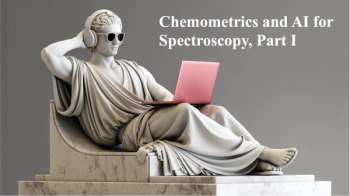Key Points
- NIR spectroscopy with ML accurately detected microplastics in chicken feed, achieving 96.26% classification accuracy using the SPA-SVM model.
- The study used PCA, MSC, and SNV to enhance spectral data and distinguish contaminated from uncontaminated feed samples.
- This non-destructive method shows promise for rapid, low-cost microplastic monitoring in agricultural systems.
A recent study examined the effectiveness of using near-infrared (NIR) spectroscopy and machine learning (ML) in detecting microplastics (MPs) in chicken feed. The study, which was published in the journal Spectrochimica Acta Part A: Molecular and Biomolecular Spectroscopy, is designed to address a growing issue in food safety and the global agricultural sectors (1).
Thanks to anthropogenic activities, MPs are growing more pervasive in the environment. Unfortunately, this is also resulting in them finding their way into our food and water supply (2,3). MPs, which are tiny plastic particles less than five millimeters in size, have also been ending up in agricultural systems, which has raised concerns about their accumulation in animal feed (1–3). Numerous environmental analysis studies have tracked MPs in the environment, but fewer studies explored how MPs can be detected in agricultural systems.
This study sought to bridge this knowledge gap. In this study, lead authors Renjie Yang and Hao Liang investigated whether NIR spectroscopy, when paired with advanced ML techniques, can serve as an effective method for identifying MPs in poultry feed. As part of the experimental procedure, the researchers prepared 320 chicken feed samples, of which 80 were non-contaminated and 240 were artificially contaminated with three types of common microplastics: polypropylene (PP), polyvinyl chloride (PVC), and polyethylene terephthalate (PET) (1). They then collected the NIR diffuse reflectance spectra for all samples.
The researchers investigated the spectral signatures of both the feed and the MPs using principal component analysis (PCA). This showed some spectral differences that were further enhanced by pre-processing techniques such as multiplicative scatter correction (MSC) and standard normal variate (SNV) (1). These techniques improve the accuracy and robustness of spectral data, removing variations unrelated to chemical differences.
Two selection algorithms were used in this study to refine the detection process. Competitive adaptive reweighted sampling (CARS) and successive projections algorithm (SPA) helped improve model performance and reduce computational complexity (1).
Using these selected features, the team trained four different ML models as part of the study. The four ML models include partial least squares discriminant analysis (PLSDA), back propagation neural network (BPNN), support vector machine (SVM), and random forest (RF) (1). These ML models all helped to differentiate between contaminated and uncontaminated feed samples. Among the four ML models, the SPA-SVM model stood out, achieving a remarkable classification accuracy of 96.26% for unknown samples in the test set (1). This level of accuracy suggests that SPA-selected variables correlate strongly with the characteristic spectral signatures of the microplastics embedded in the feed.
Besides testing out the four ML models, the research aimed to differentiate between the different types of MPs. Although their study did not deeply investigate the differentiation among MP categories, this latest phase incorporated that objective, showing that NIR spectroscopy combined with ML could successfully identify specific polymer types within the feed matrix (1).
Despite some limitations in this study, including the controlled contamination of samples rather than analysis of real-world industrial feeds, the study did show that NIR spectroscopy and ML, when combined, offer a low-cost, rapid, and non-destructive method to monitor feed quality, ensuring safety not only for poultry but also for the consumers who rely on animal products (1).
As concerns over environmental pollutants continue to mount, the ability to monitor contaminants like MPs using accessible tools becomes more urgent. This research underscores the potential of combining established spectroscopic techniques with evolving computational methods to address modern agricultural challenges (1).
References
- Liu, Y.; Huo, Z.; Huang, M.; et al. Rapid Detection of Microplastics in Chicken Feed based on Near-infrared Spectroscopy and Machine Learning Algorithm. Spectrochimica Acta Part A: Mol. Biomol. Spectrosc. 2025, 329, 125617. DOI: 10.1016/j.saa.2024.125617
- Wetzel, W. Microplastic Menace in India’s Pichavaram Mangroves Revealed in New Study. Spectroscopy. Available at: https://www.spectroscopyonline.com/view/microplastic-menace-in-india-s-pichavaram-mangroves-revealed-in-new-study (accessed 2025-06-04).
- Wetzel, W. The State of Microplastic Pollution in the San Pedro Bay. Spectroscopy. Available at: https://www.spectroscopyonline.com/view/the-state-of-microplastic-pollution-in-the-san-pedro-bay (accessed 2025-06-04).






